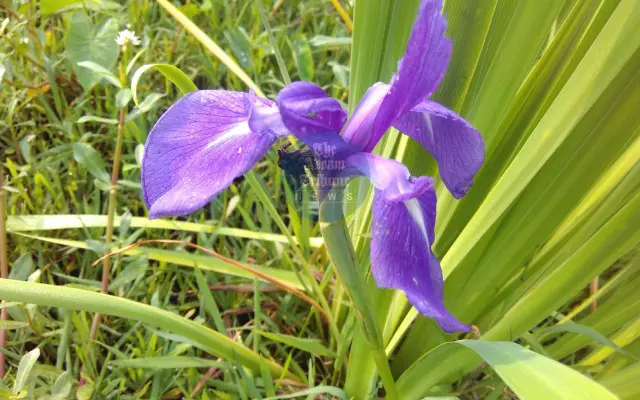
Imphal, Jan 31: Kombirei, a religiously associated flower of Manipur which had been misidentified for a long time, has been finally identified as Japanese iris (Iris laevigata) and has become a newly added flower to the Indian flora, according to the latest edition of the Indian Journal of Traditional Knowledge.
The January 2024 edition of the journal, published under the Council of Science and Industrial Research-National Institute of Science Communication and Policy Research (CSIR-NIScPR), said Iris laevigata Fisch has not been reported earlier, from India and this being the first record from Manipur, it is a new addition to the flora of India.
It added, "Also, due to wrong identification as I bakeri, it was earlier reported as endemic to Manipur. The species is endangered. If no proper conservation measures are taken up urgently, the species may completely vanish from the state and from India as well.”
Kombirei or Manipuri Iris, which is considered endemic to Manipur as per the Flora of Manipur (2000), has long been misidentified (misnomer) as Iris bakeri Wall (Iridaceae) but after thorough investigation, the botanical identity of this plant has been established as Iris laevigata Fisch, says Chief Scientist Dr Huidrom Birkumar of CSIR-North East Institute of Science and Technology,Branch Laboratory in Imphal.
During the 1960's, the Kombirei plant was naturally growing in two wetlands of Manipur, namely Lamphelpat (Imphal West district) and Yaralpat (Imphal East district) but now it has completely vanished from its natural habitat due to various factors like habitat loss and invasion by weeds. A few hundred plants are maintained in a captive farm at the periphery of Lamphelpat by a private cultural society, viz. Ipathoukok, Dr Birkumar,the key author of the scientific report, added. The other author was Ashiho A. Mao of the Botanical Survey of India.
“So we would like to draw the attention of the concerned authorities to take up the necessary steps for conservation efforts before the species vanishes not from Manipur but from the country,” he felt.
Not only a popular Manipuri romantic song (‘Kombirei Yaralpatki Kombirei’) which describes the plant, but a famous Manipuri feature film entitled Kombirei was also made.
After all, this violet-coloured flower-Kombirei (Iris laevigata) along with Kushumlei (Carthamus tinctorius L), Leiri (Symplocos cochinchinensis Moore) and other flowers, are offered during religious occasions, including Manipuri New Year (Sajibu Cheiraoba).
Nowadays, due to the unavailability of the Kombirei, the blue flowers of other introduced Iris species are used as a substitute for it.
As narrated by elders, it is believed that the word Kombirei is derived from the words Kum-Pi-Lei (Kum=season, Pi=dominant, Lei=flower), the most beautiful flower, dominant and full bloom during the early season (Manipuri New Year, which generally falls during the month of April).
“Due to its habitat sensitivity, conservation of this plant should be prioritised, otherwise loss of this species from Manipur may lead to loss of a species from the Indian flora,” says Dr Birkumar.
